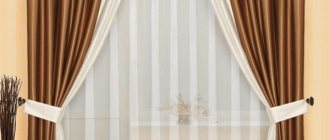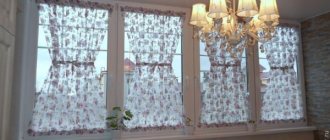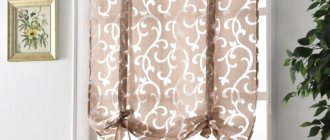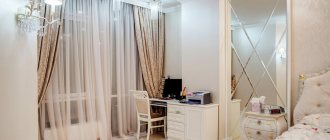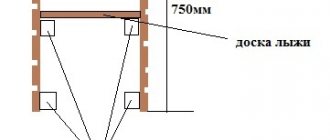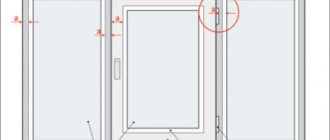How to process the bottom of tulle
To complete this work you will need a sewing machine, scissors, thread, needles and, of course, an iron.
Chiffon tulle
Chiffon is a light and airy fabric. Even professionals find it difficult to work with. Therefore, hemming chiffon tulle requires some knowledge:
- The table on which chiffon is worked is covered with several layers of cotton fabric or thick linen.
- Only thin needles are used.
- Step length 3–4 mm.
- When making a seam, you need to place toilet or tissue paper under it. This will protect the chiffon from damage that could be caused by the machine conveyor.
Professional seamstresses use 3 types of seams to process chiffon: “American” or as it is also called the Moscow seam, zigzag and a combined version.
Turn the fabric inside out about 1 cm. Sew as close to the fold line as possible. Carefully trim off excess material with scissors. Then turn it in again by 0.2 cm and stitch to the edge. The result is a fine finishing of the bottom of the tulle using two lines.
Organza tulle
Organza is a fragile and airy fabric, an ideal material for daytime curtains. Few people know how to properly hem curtains made from this fabric.
Fabric edge processing options:
- zigzag seam;
- performing a double hem;
- hemming using braid;
- burning the edge of the fabric.
The simplest option is a double hem. The bottom of the tulle is folded 3–5 cm, and the hem is double folded. This prevents the organza threads from being knocked out. This option is used mainly if there will be furniture near the window so that the seam is not immediately noticeable.
How to hem organza curtains if they are all visible? In this case, the Moscow seam is definitely used.
Nylon tulle
Nylon is a fairly stiff fabric. There are two ways to hem the bottom of nylon tulle:
- Moscow seam;
- double hem
When performing a double hem, the width of the fold of the material should be at least 3 cm.
How to shorten a curtain without cutting it
In this way, it is just right to shorten curtains that are not just very long, but also to disguise short curtains or those with some kind of defect.
To do this you need:
- Hang the curtains in a permanent place.
- Step back 5 cm from the edge of the curtains and stitch the sides manually.
- Stitches start from the middle of the curtain and go down the edge. Before reaching the bottom corner, round the corner just a little. The thread is fixed at the beginning of the seam and left at the end.
- Find the middle of the fabric, the seam begins 20 cm above the side ones.
- When finished, pull the threads, making folds on the curtain from below. When the required length has been achieved, the threads are fixed.
- Straighten out folds.
- This procedure is carried out with the second curtain.
If the curtains are made of heavy and dense material, then these options will not work.
These curtains are shortened using tape. Instead of hand-made seams, a narrow ribbon is sewn from the inside. Use it to adjust the length of the curtains.
How to process the bottom of a curtain
How to hem curtains? The answer to this question interests many. Most ready-made curtains are sold in extra length so that they can fit any ceiling height.
What you need to know:
- If the fabric is loose, then you need to first process the edge with a zigzag, setting the maximum step.
- All curtains can be hemmed using a double hem. The exception is curtains that have lining. The stitch length is 3 mm.
- For greater aesthetics, a hidden seam is used. In this option, no threads will be visible on the front side of the fabric. Most machines have a hidden seam function.
- Before sewing the main seam on a sewing machine, you need to manually baste the hem. To do this, take long steps or use pins. Next you need to iron the future seam.
- If the curtains are made of organza or silk, it is recommended to use an adhesive strip. To do this, the fabric is folded, secured with pins, and a strip is placed between the fabric. Afterwards all that remains is to iron it.
- Light and airy curtains require weighting the bottom part. For this purpose, special tapes are used, which are sold in specialized stores.
Processing the bottom of curtains with lining
The first step is to prepare the fabric, that is, remove part of the lining so that the seam is neat and not bulky. The lining is shortened by 12–13 cm. When folded, the corners of the curtains will be uneven: to avoid this, they are cut at an angle of 45⁰. The first hem is 5 cm, the second is 7.5 cm. Iron it well and sew it to the lining.
some useful tips – Masters Fair
Creating something with your own hands is always interesting. Especially when it comes to designing window openings in your house or apartment. It’s so nice to boast later in front of your guests that you made this beauty with your own hands. But if you are not a professional in making curtains, then it can be difficult to avoid mistakes. So what should we do? To help you save money and time, we will give you some useful tips. We hope you will find them useful when sewing curtains, drapes, lambrequins and other textiles.
So, if you had to sew together two materials that differ in thickness, be sure to monitor the thread tension. This will save you from such troubles as fabric sagging. In general, when working with fairly thick and dense fabrics or a large volume of curtain tape, it is recommended to change the needles on your sewing machine more often. The reason is simple - dense material quickly dulls the needles. Therefore, if the next material in line is thinner than the previous one, you will get a poor-quality seam. It’s better to change the needles to new ones - you’ll be pleased with the results and save time.
Bias tape is an excellent applied material that greatly facilitates the work of a seamstress. The range of its applications is wide and varied. But when working with it, beginners may have difficulties, mainly due to the fact that stitching it smoothly is problematic. To avoid crooked edges, just use a very simple method - iron the tape, carefully folding it in half.
It will become much easier to sew it on.
What to do if you come across curtain braid, the structure of which, to put it mildly, is loose? This can be corrected by ironing it with an iron in steam mode. This will make the braid tighter, which will help avoid possible shrinkage of the fabric.
If you use regular chalk when marking fabric for curtains the old-fashioned way, it is better not to do this.
The thing is that chalk is a heterogeneous formation; it contains solid particles that act as an abrasive. If your future curtains will be made of thin, lightweight fabrics, chalk is contraindicated for them. And it’s also not particularly suitable for other materials - removing traces of chalk is already difficult, but here, even after washing, your markings will be clearly visible in bright light. You can, of course, get by with a bar of soap. But it is better to purchase a special sewing chalk or disappearing marker for fabric.
Just test it first on a small piece of fabric.
When using doublerin when sewing thick curtains and lambrequins, remember that before gluing it you need to moisten it a little so that the swollen adhesive base sticks better to the fabric. Having first slightly wetted the dublerin, you need to let it lie in this state for about an hour. Or even leave it wrapped in a wet cloth overnight. Well, the gluing process itself is best done under the influence of steam.
By the way, if you are not going to sew curtains in large quantities now and immediately, then there is no point in stocking up on adhesive materials for future use. The fact is that they require special storage conditions, subject to temperature, light and humidity conditions. Otherwise, the adhesive layer will dry out, crumble and the material will become unusable. So, if you do not have a dark, cool room where you could store doublerin, bandeau and cobweb, then try to calculate in advance the amount of materials you need. The same goes for fabrics, and even threads. The former, stacked on top of each other in rolls, can form creases that are difficult to remove, while the latter dry out from long-term storage and lose their smooth structure.
When planning to sew organza in several layers, be sure to iron the seam. This way the layers of fabric will not move too much relative to each other. But do not forget to do this by setting the iron to the appropriate setting. Otherwise, you will overheat or even glue the fabric - the consequences are irreversible, since overheated organza changes its shape, bubbles, in general, after which you can throw it away. And one more thing - when sewing a seam, use only thin needles. They do not tear the fabric, and the seam is neat.
And if you are sewing together fabrics of different thicknesses, do not forget that the thinner fabric should be on top when sewing. Otherwise, it may become wrinkled by the feeder of the sewing machine.
When your fabric is almost ready for cutting, do not miss an important detail - trim the edge. Otherwise, the connecting seam may end up being too tight. The only exception may be when the fabric is scalloped along the edges. In this case they are usually used as edge trim. And just before cutting, it is best to iron the fabric. However, if you are making a bias cut, it is best to leave the raw edges of the fabric as is as they may stretch.
Before gluing Velcro Velcro, it is necessary to properly prepare the surfaces to be glued, that is, degrease them by treating them with alcohol.
Well, if Velcro with a sticky layer still does not stick well to the fabric, there is also a way out. Take a hairdryer and heat the tape with hot air. Then glue it to the fabric.
If you combine your curtains from different materials, do not forget to decorate the fabric. This will help avoid such troubles as uneven shrinkage. And still try to take fabrics that are as close in composition as possible.
It happens that you do not know all the properties of the fabric from which you plan to sew your product. In this case, it is recommended to do decatification. And at the very bottom seam, when hemming, leave a maximum margin - in case of possible shrinkage, for example, after washing, your foresight may come in handy.
In general, it is best to wash curtain fabrics without using powders, since they may contain various abrasives and additives. All this, in addition to the fact that it dissolves poorly and, as a result, is difficult to rinse out, also leaves traces. This effect is especially noticeable in bright sunlight - stains and stains will make your curtains unattractive. To avoid this problem, use liquid detergents. And be sure to follow a gentle regime. The washing temperature should also not exceed thirty to forty degrees.
Well, and probably everyone knows that curtain fabrics should never be twisted after washing, and certainly not subjected to forced drying. Just shake, gently straighten and hang as is.
And your curtains will serve you for a long time.
We hope you find these tips useful!
With respect to all my customers!
www.livemaster.ru
How to process tulle on the sides
Three methods are used to process tulle on the sides:
- hem seam;
- using bias tape;
- Moscow seam.
Tulle made of organza, chiffon and nylon on the sides is not processed using an overlocker or a zigzag seam.
The hem stitch is suitable for any fabric. For nylon and organza, the width of the fold is 3 cm.
Tulle treated with bias tape looks original. It can be matched to the color of the curtains, or it can be in contrast. The main thing here is to do everything carefully. Bias binding is used to process fabrics with embroidery or mesh tulle.
It is not always possible to select a product from the assortment of ready-made curtain models that meets our tastes and requirements, and even fits harmoniously into the interior. It's a different matter when it comes to the choice of materials or the options offered with free length: a raw edge that is hemmed to the desired height.
- Finishing the edge of the curtain with a regular seam
- Treatment with adhesive tape
- Fabric edging
- Finishing the edges of organza and tulle
Finishing the edge of the curtain with a regular seam
But you must admit that without a bottom seam, a curtain made of the most expensive and exquisite fabric looks untidy - you can’t do without hemming. Going to a studio with such a small order will require not so much financial costs as time and effort. It is much easier to finish the edges with your own hands using a regular seam. You can do it on a typewriter or manually.
First you need to accurately determine the length of the finished product. To avoid making mistakes with your measurements, leave the fabric hanging for 2-3 days: it will stretch and take its final shape. The edges of the fabric can be processed using different seams: depending on the type of fabric used for the curtains:
- It is better to hem light materials (organza, veil) with a double hem. In this way, you can process the edge of the fabric without an overlocker, because the edge will be in the middle of the folded material, without being subject to mechanical stress during operation.
- The edges of multi-layer, dense or lined fabrics are processed with an ordinary fold.
You can process the edges of the fabric manually; this is even preferable for plain materials with a smooth texture - the stitches on the front surface will remain invisible. The main thing is to use a needle to hook only one thread of the main fabric. If you make the stitch wider, it will “appear” on the curtain in small stripes or dots.
To shorten curtains with a machine, cut the fabric to the required length, taking into account seam allowances, make a hem, baste and stitch the product.
To make the seam less noticeable, use thin threads that match the color of the curtains as closely as possible.
Processing the top of the curtain: types of design and decoration in the photo
- home
- About the site
- Terms
- Photo
- Video
- Site Map
- Contacts
Add to favorites
How to process the top of a curtain: types and methods of decoration
It’s wonderful when a housewife decides to sew beautiful curtains with her own hands to decorate her rooms. By and large, the simplest curtain models do not require special sewing skills. Of course, if you want to decorate the window opening in an original way, you will have to think about a more complex version of the curtains. In any case, the finished product requires a beautiful frame on the top. Which option should you choose? What is required to process the top of the curtain? And what is the name of this or that type of decoration, advice from professional seamstresses will tell you.
How to treat the top of a curtain?
Simple design
The top of the curtains can be finished with braid. It can be rhythmic, folded, with glasses, chess-shaped. The length of the finishing tape is determined at the request of the housewife and depends on the depth and frequency of drapery. If it is necessary for the curtain to fall in measured, deep folds, the length of the finishing tape should be 2-3 times longer than the main fabric.
Processing the top of the curtain using the braid in the photo should be done in such a way that there is sufficient distance between the fastening loops and the top of the product to hide the hooks on which the curtain is hung. Typically, this distance, called the comb, is left for wall cornices. In the case of a ceiling type of fastening, the braid can be stitched to the very edge of the canvas. A lambrequin will help complete this design option. This is a continuous strip of fabric that is attached over the curtain. Usually the lambrequin not only decorates the curtain composition, but also hides the cornice.
Using eyelets
Types of processing for the top of curtains include the option of using eyelets. These are special rings that are inserted into the upper part of the product and then put on the cornice pipe. In order to independently secure the eyelets on the curtain, you first need to glue rigid braid and decorative edging to the canvas. After this, holes are cut at a uniform distance on the compacted area of the canvas. The diameter of the holes corresponds to the size of the eyelet rings. Do not forget that the number of eyelets used on one curtain must be even. Only under this condition will the fabric be distributed evenly.
Using drawstring
You can decorate the top of the curtain at home using a drawstring. To do this, the top of the curtains is treated with a hem seam. Unsewn holes are left on the sides of the product, through which the cornice is inserted into the curtain. The width of the drawstring is equal to the volume of the cornice plus a few centimeters for the smooth sliding of the canvas along the cornice.
Loop decorations
The curtains with hinges in the photo look original. The configuration, size and color of the loops depend on the model of the curtain and the size of the cornice. It is not difficult to process the top of the curtain with loops. You should select a suitable material that will be in harmony with the fabric of the product in color and texture, and cut out loops from it for attaching the curtains. The loops can be velcroed and unfastened if necessary.
An alternative option could be ties. The knot, which is located on top of the cornice, will additionally decorate the window opening. If the loops seem banal to you, decabols will help you decorate them. These are decorative rings through which curtain loops are threaded. Decabolas can be contrasting or identical in color to the curtains.
Treatment with adhesive tape
A simple and convenient way for thin fabrics with a non-textured surface is using adhesive tape or braid. Injections with a needle will not leave marks on the material, and the edges of the curtains can be processed in a matter of minutes.
This method will be a lifesaver when you are in a hurry and don’t have a sewing machine at hand - carefully finishing the edge of the fabric by hand will take at least several hours.
To work you will need:
- self-adhesive tape;
- iron.
Let's get started:
- We bend the fabric (once), adjusting the desired length of the product.
- Smooth out the fold with an iron.
- We insert adhesive tape between the layers of the lower edge of the curtain and apply it again with a hot iron, fixing the hem.
Attention! If you are working with curtains made of heavy thick fabric or making a wide hem, glue the braid in several rows.
This method is quick to perform and “low-traumatic” for the fabric (since needles are not used), but not as reliable as classical methods with seams. After washing, the tape will come off and then you will have to repeat the operation.
Curtain tape: types and characteristics
Curtains will only decorate a window if they are equipped with beautiful drapery . An important component of their appearance will be the folds that fall in waves on the surface of the curtains, giving it uniqueness. Curtain tape, or also called English braid, is ideally suited for these purposes. Externally, it is a frame with twisted cords running along the entire braid. It should be sewn to the curtain from the wrong side at the very top. By pulling the cords along the surface of the fabric, they begin to form folds of the required width and configuration.
Fabric edging
The treatment of curtains made from fabric edging looks very neat.
Tools:
- standard sewing “trio”: threads, needles, scissors;
- As an edging, you can use any strip of fabric: ready-made ribbon or braid cut from the material. The main thing is that its length is no less than the width of the curtain fabric.
How to make edging with a machine, step-by-step instructions:
- If you are not using ready-made tape with finished edges, cut a strip of fabric to the desired length.
- The finished braid is simply folded in half, the cut tape is folded several times: first in the middle, then the raw edges are folded inward again. The formed strip is ironed.
- We insert the edge of the curtain between the folded tape, baste it, and then sew the parts together with a machine seam.
An alternative to edging is a frill, behind which the raw bottom of the curtain is hidden. But this method requires a certain stylistic decision. The way the work is done is also different:
- The edge of the canvas is hidden not between the layers of the strip, but behind the frill.
- It is recommended to pre-treat the bottom of the curtain with an overlocker.
Sewing tips
Before the braid is sewn to the curtain, a number of works should be carried out .
This is preceded by measuring the cornice, curtain and braid. Moreover, 15 cm of the length of the tape should be added to the resulting length of the curtain as a reserve. Considering that the braid shrinks, it needs to be adjusted. For this purpose, it is moistened, dried and a hot iron is passed over it. All curtain seams must be finished. The braid is attached to the curtain in its upper part with an indentation of 2-5 mm, from the wrong side, and its edges should be turned up by 2 cm. Using a cord, pulled to a certain size, the necessary configurations are obtained. Next, you should fasten the cord, which will fix the desired condition of the curtain. The optimal gathering factor is 2-2.5, this is what determines the pomp of the curtain fabric.
Thus, the right curtain tape can work wonders even with inexpensive material, creating intricate folds and providing a chic look to the living room.
Finishing the edges of organza and tulle
Working with dense fabrics is not particularly difficult. The main thing is to decide on the hemming method and select materials (threads, braid) that match the color of the curtain. Another thing is thin fabrics with transparent tulle textures.
httpv://youtu.be/HzXRskTurN8
Organza is often used as light curtains in combination with thick and massive curtains. But finishing the edges of organza tulle is not easy. Trimming excess length fabric is done in two ways:
- At the desired level (along the cutting line), the fabric is sewn with a zigzag seam and only then cut off. This is done so that the thinnest threads of the material do not fray.
- In the second method, additional processing of the edge is carried out immediately after cutting off the unnecessary length with scissors. The edge is brought to a candle (or other source of open flame) and burned. But this needs to be done quickly so that only the threads sticking out at the cut ignite, and the main fabric is not damaged by the high temperature.
Now let's start hemming. We form a neat double hem, baste it and sew it on the machine. For a beautiful drapery design, use weights.
Advice! To properly process the edges of the organza, when forming a double fold, ensure that the hem is the same size across the entire width of the curtain. A broken geometry of a straight edge line will look sloppy on the finished product, and a slipped seam will be covered with unaesthetic folds.
Another way to process tulle made from thin fabrics is with bias tape. This elastic braid is used to trim the edges of coarse mesh curtains, veils or light curtains with embroidery. In fact, this is the same edging of fabric with a finished ribbon or a cut strip of material: a veil, mesh or organza is inserted between the trim halves folded in the middle and stitched.
